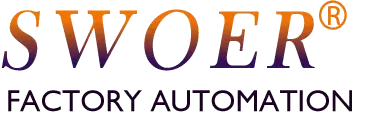Flexible feeders excel in applications requiring high flexibility e gentle handling. They are ideal for:
- Tangle-Prone and Delicate Parts
This is the primary strength of flexible feeders, solving key pain points of vibratory bowls.
- Examples:
- All types of springs
- O-rings, seals
- Flexible wires, cables
- Thin-walled, precision metal/plastic parts
- Reason: Parts are freely scattered, eliminating forced friction and impact that cause tangling, scratches, and deformation.
- Parts with Complex Geometry, Difficult to Orient
When mechanical orientation is too complex or costly.
- Examples:
- Asymmetric parts
- Parts with deep holes/cavities
- Parts with subtle orientation features
- Reason: Vision systems can easily identify subtle features for precise orientation.
- High-Mix, Low-Volume Production
When production lines require frequent product changeover.
- Examples: R&D labs, medical device manufacturers, electronics contract manufacturers.
- Reason: Changeover requires no hardware modification—just loading a new vision program—reducing setup time from hours to minutes.
- Applications Requiring High Integration with Robots
- Examples: Any part requiring robotic pick-and-place.
- Reason: Flexible feeders are inherently designed for vision-guided robotics, providing precise coordinates for the robot.
Summary of Core Criteria
| Criteria | Explanation |
| High Flexibility | Quickly adapt to different products by changing software, no mechanical retooling. |
| Part Gentleness | No vibration or impact, perfectly protecting delicate parts. |
| Handles Complex Parts | Vision can handle complex shapes and subtle features that are challenging for mechanical tooling. |
| Suited for Low-Volume & High-Mix | Extremely low cost and high speed for product changeover. |
In summary, a flexible feeder is the optimal choice when your core needs are flexibility, part protection, handling complex shapes, and rapid changeover. It represents a paradigm shift from “hard mechanical orientation” to “soft vision-guided” feeding.
